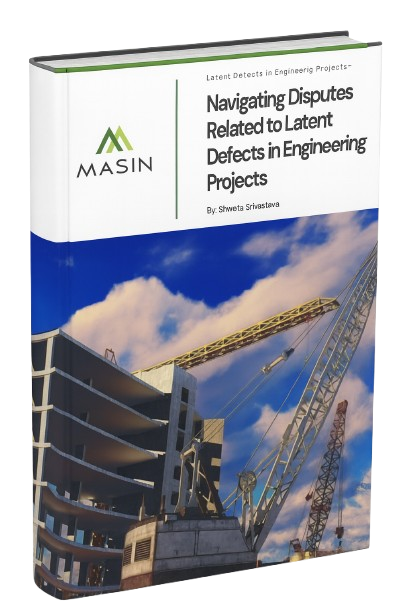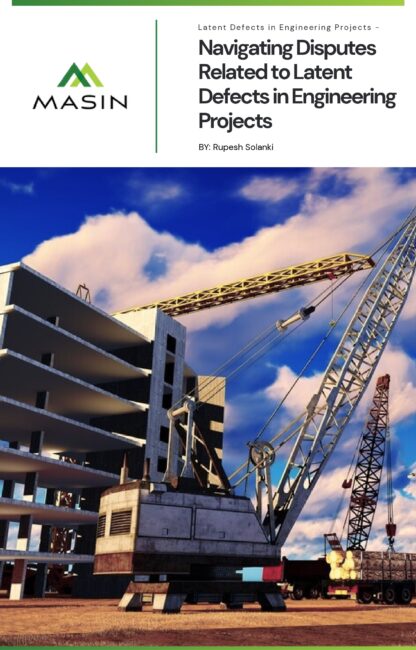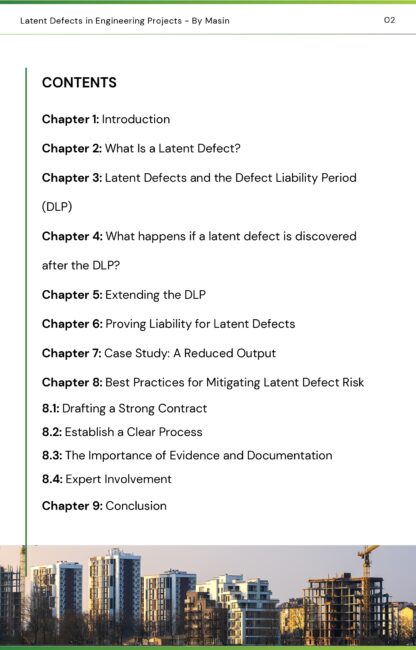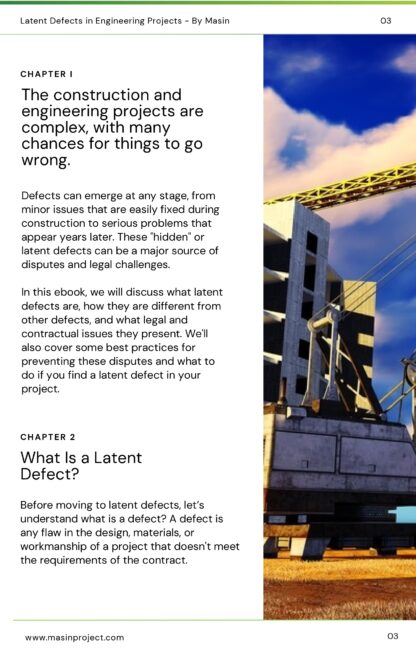
Latent Defects in Engineering Projects – Navigating Disputes Related to Latent Defects in Engineering Projects



What’s in it for you?
This ebook helps you understand the hidden risks of latent defects in engineering projects—and how to deal with them. You’ll learn how to identify, prevent, and resolve such defects through legal insights, real-world case studies, and practical best practices. Whether you’re a project owner, contractor, or consultant, this guide equips you with the tools to reduce disputes, strengthen contracts, and make informed decisions—backed by expert strategies from Masin.
- Guidance on Proving Liability
- Case Study Application
- Risk Mitigation Best Practices
- How Masin Can Help
Frequently Asked Questions
Get answers to frequently asked questions about everything we do.
What is a latent defect in construction projects?
A latent defect is a hidden flaw in design, materials, or workmanship that isn’t immediately visible and typically surfaces long after project completion often leading to costly repairs or disputes.
How is a latent defect different from a patent defect?
Patent defects are visible and detectable during construction or inspection, while latent defects remain concealed and may only emerge after months or years of use.
Are contractors liable for latent defects after the Defect Liability Period (DLP) ends?
Generally, contractors are not automatically obligated to fix defects after the DLP. However, project owners may still pursue legal claims especially if the defect is serious and evidence proves contractor negligence or breach of contract.
How can we protect ourselves from latent defect risks?
Strong contracts with parent company or subcontractor guarantees, professional liability insurance, clear documentation processes, and expert involvement are key to mitigating risk.
Why is expert evidence important in latent defect claims?
Latent defects are often technical and complex. Expert witnesses help explain engineering failures, establish timelines, and determine liability—making them essential for successful dispute resolution.l